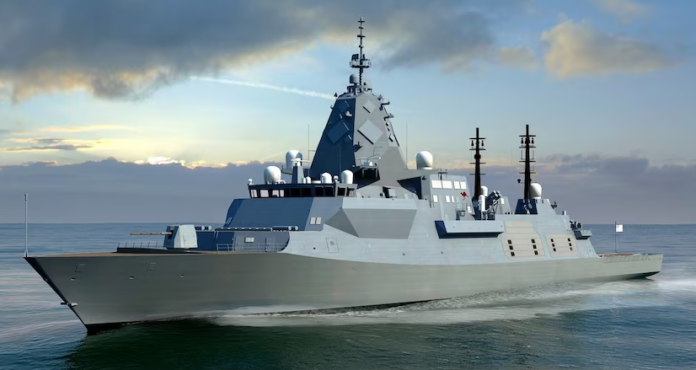Australia has unveiled a bold strategy to bolster its naval capabilities, aiming to more than double the size of its naval combat fleet while making adjustments to the troubled BAE Systems Plc Hunter-Class frigates project. The move comes as the nation grapples with increasing challenges in the Indo-Pacific region.
Defense Minister Richard Marles announced on Tuesday that the government plans to inject an additional A$11.1 billion ($7.3 billion) into warship funding over the next decade, bringing the total budget to A$54 billion. The objective is to enhance Australia’s naval strength with a larger and more formidable fleet, aligning with the country’s strategic interests in maintaining secure sea lanes and countering regional pressures, particularly amidst China’s expanding influence.
According to Marles, the Navy is set to expand its fleet to 26 warships by the mid-to-late 2040s, a significant increase from the current 11 vessels. This expansion, described as the country’s “largest fleet since the end of the Second World War,” will include:
- Three upgraded Hobart class destroyers
- Six Hunter class frigates (down from nine in previous plans)
- 11 new general-purpose frigates, gradually replacing the existing six Anzac class frigates
- Six new large operationally crewed surface vessels
Australia’s reliance on secure sea lanes for trade, situated between the Pacific and Indian Oceans, underscores the importance of enhancing naval capabilities. The current fleet, considered the oldest operated by the Navy, requires immediate upgrades to bolster air defense, long-range strike capabilities, presence, and anti-submarine warfare capabilities.
The announcement follows a comprehensive review of the military conducted by the government in response to concerns about the adequacy of Australia’s defense forces. The review, led by former US admiral William H. Hilarides, highlighted the need for urgent action to address deficiencies in the surface fleet, particularly concerning the Hunter Frigates project developed by BAE Systems.
Simultaneously, Australia is collaborating with the US and UK to develop a fleet of nuclear-powered submarines under the Aukus agreement. This initiative aims to bolster Australia’s defense capabilities and is expected to commence deployment potentially as early as the 2030s.
The plan emphasizes a continuous shipbuilding program with a focus on domestic manufacturing, with South Australia and Western Australia designated as key centers for vessel construction. Additionally, the government plans to purchase 11 general-purpose frigates “off the shelf,” with the first deliveries expected within this decade.
Marles reiterated the critical role of the Royal Australian Navy in ensuring the safety and security of sea lines of communication and trade routes, essential for the nation’s modern society and economy. The ambitious naval expansion plan underscores Australia’s commitment to safeguarding its maritime interests and contributing to regional stability in the Indo-Pacific.



